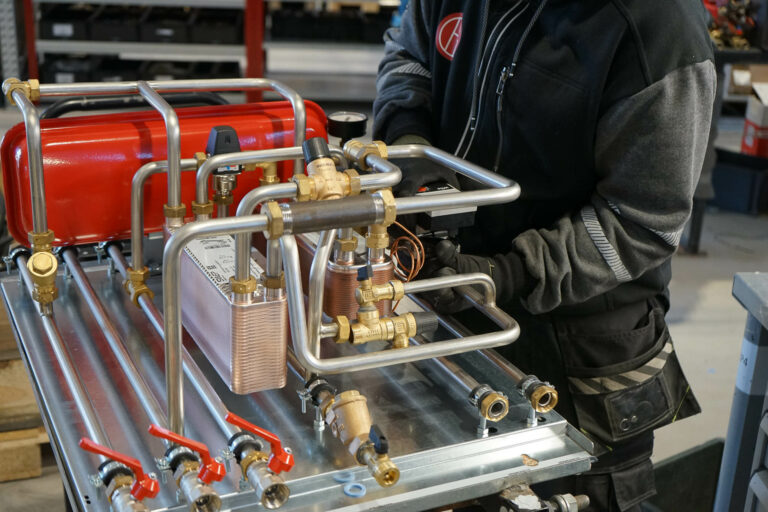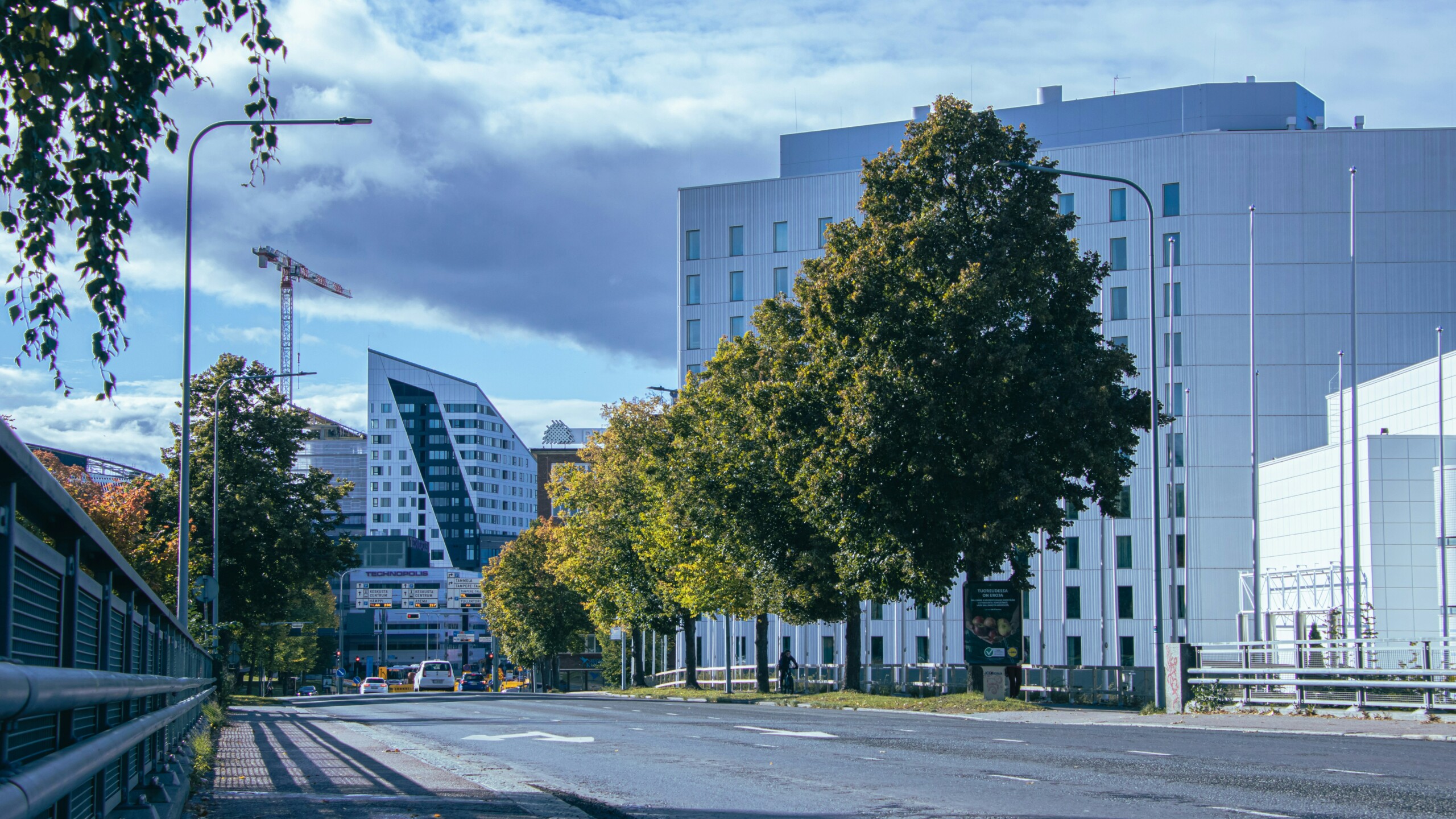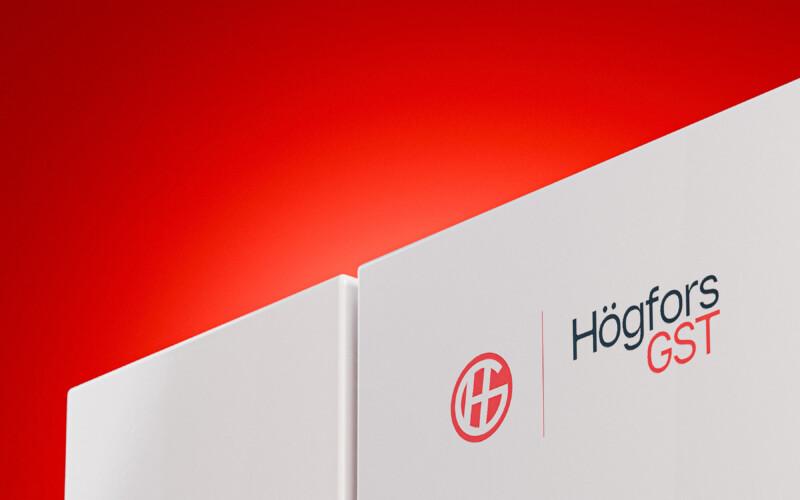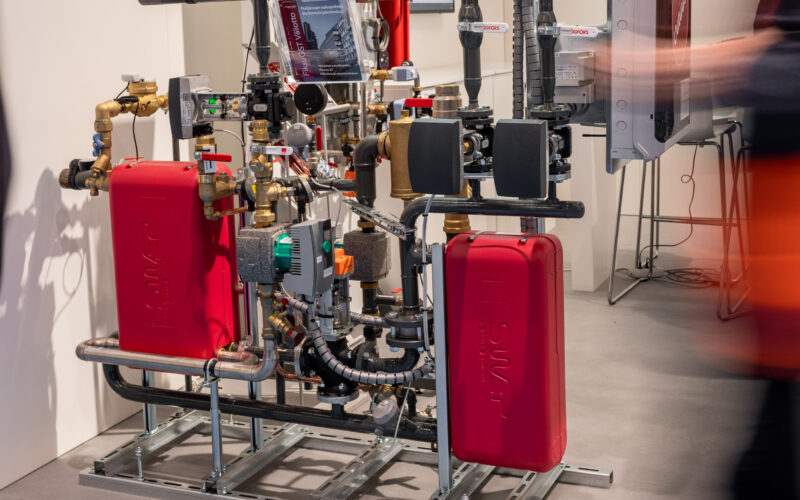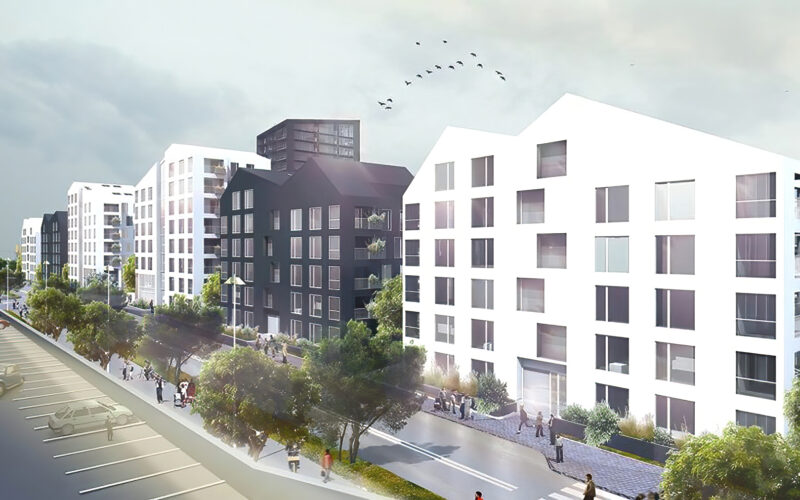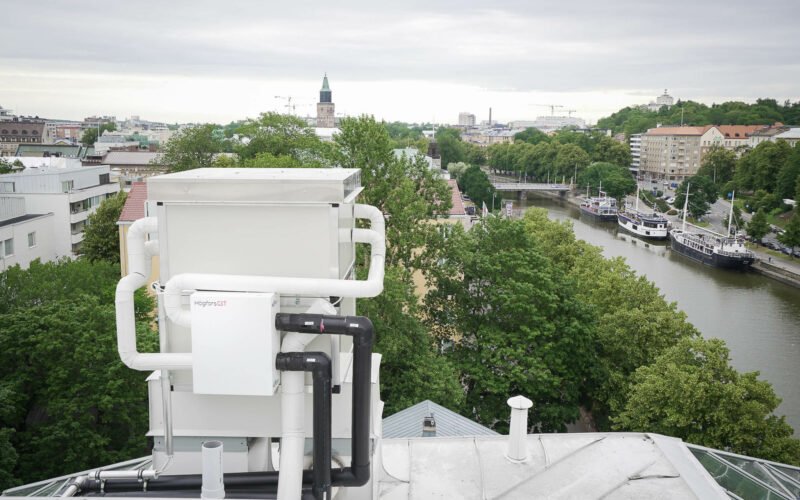Today, district heating is the most popular form of heating in Finland: more than half of Finns live in a district-heated house. District heating is also a common way to heat homes around the world. District heating thrives especially in cities where the district heating system is most efficient. Although various district heating systems have been in use for almost 200 years, the principle of district heating has remained largely the same: thermal energy produced in a district heating plant is transferred along a pipeline network to properties in the need of heat.
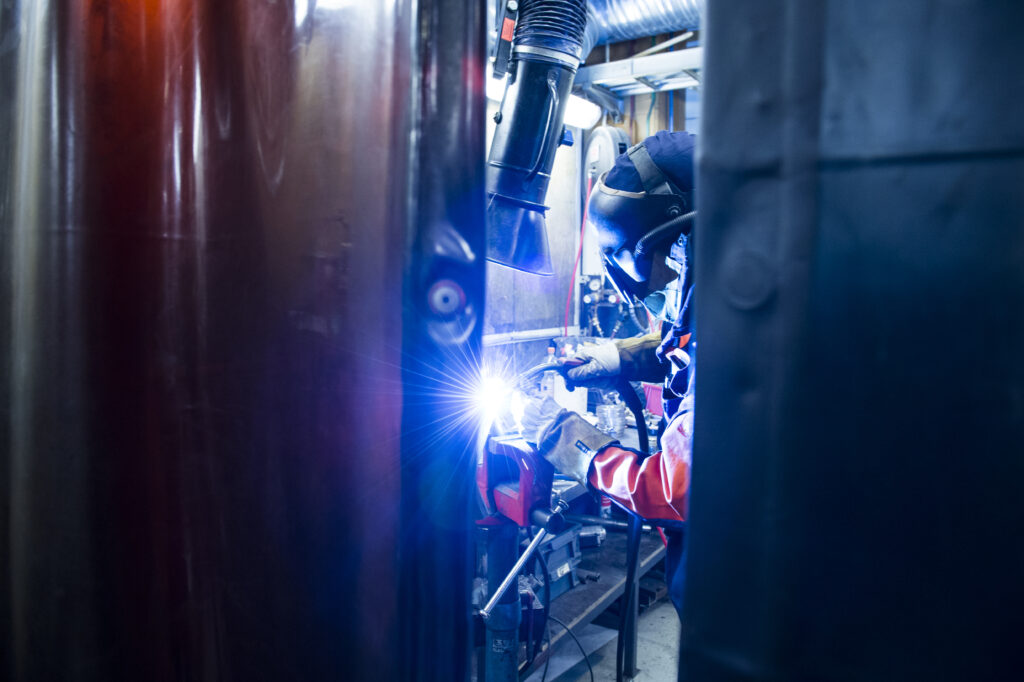
In the first part of the blog series, we traveled back in time to the 19th century, when first-generation district heating systems were invented and started gaining popularity. You can read the article here . This post moves forward in time, presenting the third-generation of district heating.
Third generation of district heating: energy efficiency and the environment as priorities
It’s the 1970s. After being invented in the early 20th century, the second-generation of district heating has revolutionized urban heating and in the ever-urbanizing world, the need for district heating continues to grow. At the same time, the requirements for the district heating network are even greater. Gradually, it started to become apparent that the second-generation technology was outdated. District heating needed to be more efficient regarding energy consumption, construction and maintenance. The time of third generation district heating had come.
The most visible change between second and third generation district heating systems is that district heating disappeared from view! Instead of pipelines being built above ground, the development of technology and materials made it possible to install factory-made, insulated pipes underground. Substations’ components, such as heat exchangers, also took up even less space. Like the second generation system, water acts as the heat transfer medium, but the temperatures in the third generation networks are considerably lower. Lower temperatures play a huge role in the efficiency of the entire district heating system, but we will return to these benefits a little later.
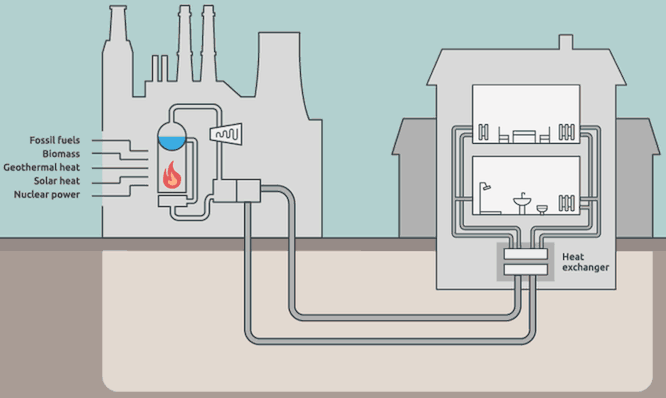
Animation: Laura Toffetti, DensityDesign Research Lab
At the end of the day, the manufacturing of prefabricated pipes and fittings was the most significant thing that separated third-generation district heating system from its predecessors. Factory-made, property-specific substations were also presented in the 1970s. Thanks to prefabricated parts, construction costs for district heating systems were reduced and construction sites were completed much faster than before. Instead of building all the parts of the system on site, the prefabricated “building blocks” could be assembled with less effort.
Third-generation district heating is sometimes referred to as Scandinavian district heating, as companies specializing in district heating systems began to appear especially in the Nordic countries. Today, Finnish district heating companies are world-class experts whose professional skills are highly appreciated around the world.

New energy sources and technologies
For more than a hundred years, district heating had been produced exclusively with fossil fuels such as coal and oil. During the third generation of district heating, new fuels and forms of energy began to be imported alongside fossil fuels: biomass, peat, solar energy, waste heat and various industrial heat pump solutions.
CHP plants also got greener: in addition to coal and peat, wood chips and other biomass were used in the combined production of electricity and heat. There were, and still are, large regional differences in the consumption of different fuels due to the availability of biomass, for instance.
As temperatures have been reduced as a result of technological development, the energy efficiency of the whole system has improved. Lower temperatures have also made it possible to connect new technologies and energy sources to district heating networks. For example, the efficiency of flue gas scrubbers that clean flue gases from power plants and at the same time recover waste heat, is improved when the return temperature of district heating is lower. The operating costs of power plants are reduced when the water pumped into the network can be up to tens of degrees cooler than before. At the same time, heat loss through the network is also lower.
District cooling is here to stay
During the third generation of district heating, the utilization of district cooling also began. Like district heating, district cooling technology was first developed in the late 19th century, but its real breakthrough had to wait for almost a hundred years.
District cooling basically works in the opposite way to district heating: when district heating transfers thermal energy in and out of the house, the energy entering in the district cooling is cold and the return water is warm. District cooling is particularly well suited for cooling larger properties in the city. The popularity of district cooling has grown significantly in the recent years.
District cooling is here to stay
During the third generation of district heating, the utilization of district cooling also began. Like district heating, district cooling technology was first developed in the late 19th century, but its real breakthrough had to wait for almost a hundred years.
District cooling basically works in the opposite way to district heating: when district heating transfers thermal energy in and out of the house, the energy entering in the district cooling is cold and the return water is warm. District cooling is particularly well suited for cooling larger properties in the city. The popularity of district cooling has grown significantly in the recent years.
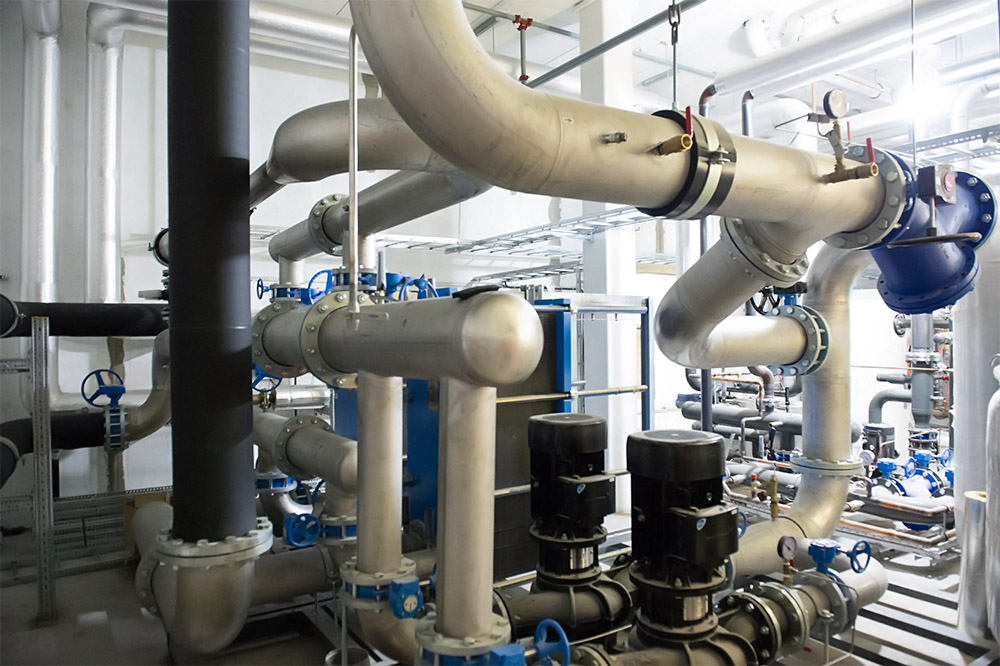
The advantages of district cooling are its environmental friendliness and reliability. The source of energy for district cooling is usually a large heat pump plant or so called free cooling, where energy is obtained directly from lake or sea water, for instance.
Environmental issues gain more importance
It can be said that in the third generation, district heating has developed into a more flexible entity than before, also in terms of fuels and the forms of energy. In previous generations, heat was produced exclusively by burning fossil fuels in traditional district heating plants, but the rapid development of heat pumps over the last century, for example, has made it possible to utilize many previously inaccessible energy sources for heating.
For various reasons, district heating’s CO2 emissions have roughly been cut to half during the third generation. Energy-efficient production and distribution saves money, but it also benefits the environment. Awareness of climate change and the serious problems it causes has also created pressure to further reduce district heating emissions and to seek alternative energy sources to replace fossil fuels.
As a curiosity, it should be mentioned that the change in attitude can be noticed while reading between the lines. Today, the District Heating Statistics published by the Finnish Energy Industry Association also accurately list the specific emissions from district heating production. The 75-page statistics published in 2005, however, does not mention emissions at all.
How did the third generation of district heating change the world?
Although heat is one of the most basic basic human neccesities, district heating became less visible during its third generation. Huge pipeline structures disappeared underground, power plants “specializing” in district heating switched more often to CHP power plants, and the system became more reliable. Today, heating is taken for granted by many city dwellers.
However, the district heating industry has quietly done a massive service to reduce the carbon footprint of their customers. The carbon footprint has been reduced by introducing lower-emission energy sources, developing heat transfer equipment and systems to minimize energy loss. As energy meters have developed, it has also been possible to provide more accurate and reliable information on end-user energy consumption.
So can it be said that district heating has succeeded in making itself invisible by operating smoothly and without interruption throughout the year? The beauty is in the eye of the beholder, but what is certain is that district heating is the absolute backbone of modern urban heating.
Third generation’s era is coming to an end
The curtain is closing for third generation of district heating, as the fourth generation is ready to take its place in the 2020s. The reasons for this are partly the same as in the previous two generational changes: the third generation system is no longer efficient enough.
The generational change has been pending for quite some time, as fourth-generation district heating solutions have been emerging into the market at a growing pace in the recent years. However, the final push for change has been given by the fight against climate change. Heating is one of the largest single sources of greenhouse gas emissions in modern cities, so it is put under particular pressure to reduce emissions.
The needs of customers also largely determine the direction in which district heating should develop in the future. As competing forms of heating gain more and more ground, district heating companies must evolve from commodity suppliers to more comprehensive service providers. The possibilities brought by the Internet, such as remote measurements, remote control systems and the collection of large amounts of data, will be a key part of the district heating system of the future.
The fourth generation period is about to begin and is expected to last at least until the 2050s. What this era will bring, is impossible to fully predict at this point in time. The core of fourth-generation district heating is discussed in the next part of this series.
